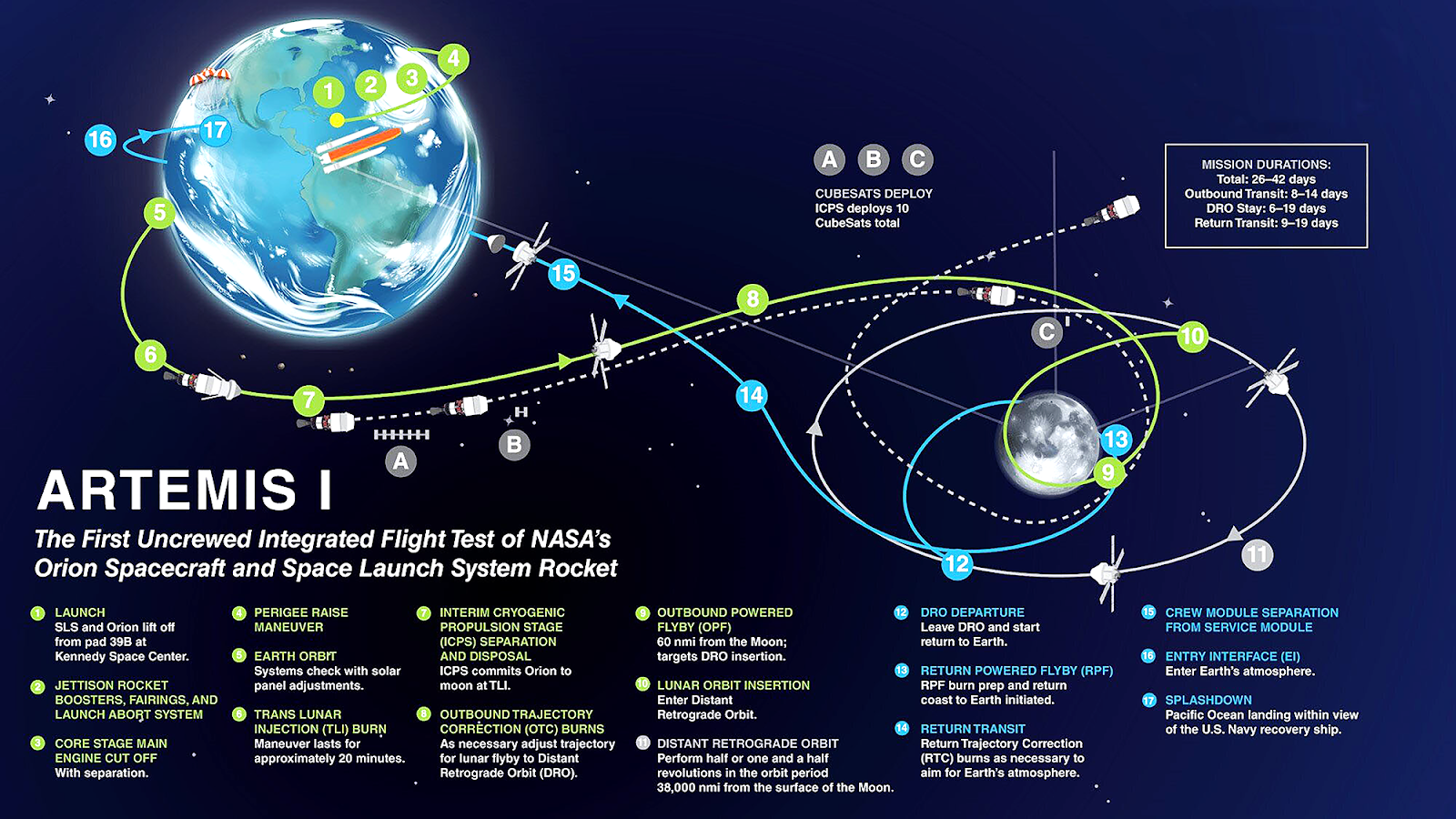Science & Technology
Third Attempt for Artemis I
- 17 Nov 2022
- 6 min read
For Prelims: National Aeronautics and Space Administration (NASA), Artemis I, moon mission, Chandrayaan project, Indian Space Research Organisation (ISRO), History of Moon Exploration
For Mains: Space Exploration, Moon mission, Sending Humans on Moon.
Why in News?
National Aeronautics and Space Administration (NASA) has successfully launched its unmanned Moon mission Artemis I on 16th November 2022.
- After multiple delays caused by technological failures and natural disasters spread across two months, the Space Launch System (SLS) rocket has been lifted off from the Kennedy Space Centre in Cape Canaveral, Florida.
What is the Artemis I Mission?
- Artemis I is an uncrewed mission of NASA.
- Named after the sister of Apollo in Greek mythology, it is NASA's successor to the Apollo lunar missions from fifty years ago.
- It will test the agency’s Space Launch System (SLS) rocket and Orion crew capsule.
- The SLS is the largest new vertical launch system NASA has created since the Saturn V rockets used in the 1960s and 1970s.
- Artemis I is the first in a series of increasingly complex missions to build a long-term human presence at the Moon for decades to come.
- The primary goals for Artemis I are to demonstrate Orion’s systems in a spaceflight environment and ensure a safe re-entry, descent, splashdown, and recovery prior to the first flight with crew on Artemis II.
- It is only a lunar Orbiter mission even though, unlike most Orbiter missions, it has a return-to-Earth target.
What is the Importance of Artemis I Mission?
- Artemis I is the first step into that new space age of achieving the promise of transporting humans to new worlds, of landing and living on other planets, or maybe meeting aliens.
- The CubeSats it will carry are equipped with instruments meant for specific investigations and experiments, including searching for water in all forms and for hydrogen that can be utilised as a source of energy.
- Biology experiments will be carried out, and the impact of deep space atmosphere on humans will be investigated through the effect on dummy ‘passengers’ on-board Orion.
What are the Upcoming Artemis Missions?
- Artemis II:
- It will take off in 2024.
- Artemis II will have a crew aboard Orion and will be a test mission to confirm that all of the spacecraft’s systems will operate as designed when it has humans on board.
- But the Artemis II launch will be similar to that of Artemis I. A crew of four astronauts will be aboard Orion as it and ICPS orbit the Earth twice before moving to the direction of the Moon.
- Artemis III:
- It is scheduled for 2025, and is expected to ferry astronauts to the moon for the first time since the apollo missions.
What are India’s Moon Exploration Efforts?
- Chandrayaan 1:
- Chandrayaan-1 was India's first mission to Moon under Chandrayaan project.
- It was launched successfully in October 2008 from Satish Dhawan Space Centre (SDSC) SHAR, Sriharikota, Andhra Pradesh.
- Indian Space Research Organisation (ISRO) lost communication with Chandrayaan-1 on 29th August 2009.
- Chandrayaan-2:
- Chandrayaan-2 is India's second mission to the moon and comprises a fully indigenous Orbiter, Lander (Vikram) and Rover (Pragyan).
- The Rover Pragyan is housed inside Vikram lander.
- Chandrayaan-3:
- The ISRO recently announced India’s third lunar mission Chandrayaan-3, which will comprise a lander and a rover.
UPSC Civil Services Examination, Previous Year Question (PYQ)
Q. Which of the following pairs is/are correctly matched? (2014)
| Spacecraft | Purpose | |
| 1. | Cassini-Huygens | Orbiting the Venus and transmitting data to the Earth |
| 2. | Messenger | Mapping and investigating the Mercury |
| 3. | Voyager 1 and 2 | Exploring the outer solar system |
Select the correct answer using the code given below:
(a) 1 only
(b) 2 and 3 only
(c) 1 and 3 only
(d) 1, 2 and 3
Ans: (b)
Exp:
- Cassini-Huygens was sent to study Saturn and its moons. It was a joint collaboration between NASA and European Space Agency. It was launched in 1997 and entered Saturn’s orbit in 2004. The mission ended in 2017. Hence, pair 1 is not correctly matched.
- Messenger, a spacecraft by NASA was sent to map and investigate Mercury. It was launched in 2004 and entered Mercury’s orbit in 2011. The mission ended in 2015. Hence, pair 2 is correctly matched.
- Voyager 1 and 2 were launched by NASA in 1977 to explore the outer solar system. Both the spacecrafts are still operational. Hence, pair 3 is correctly matched.
- Therefore, option (b) is the correct answer.





